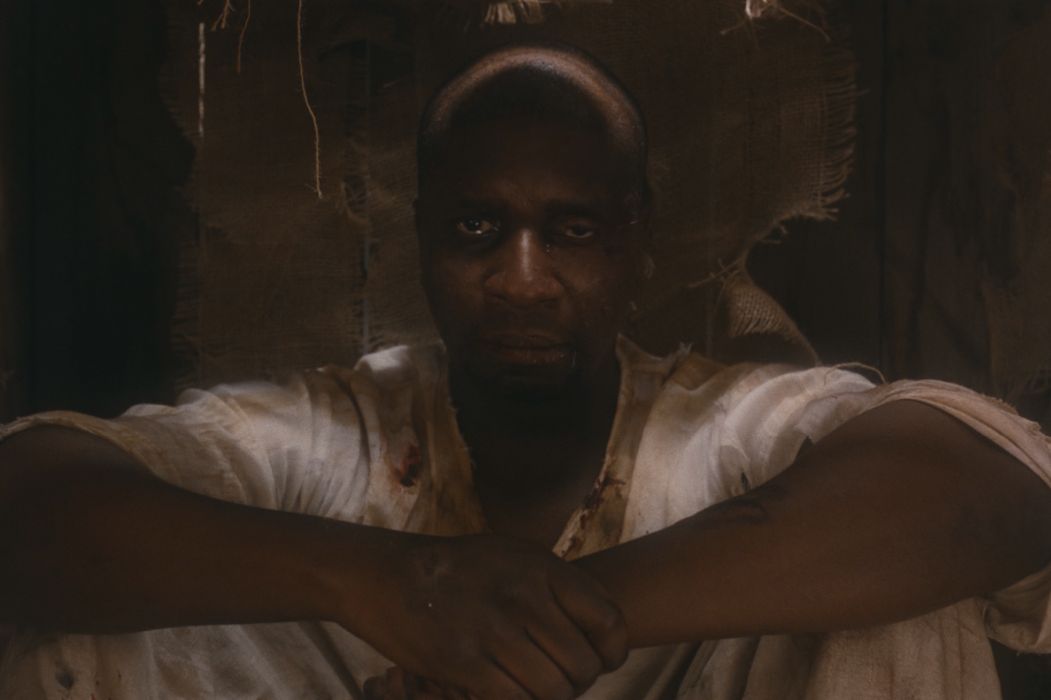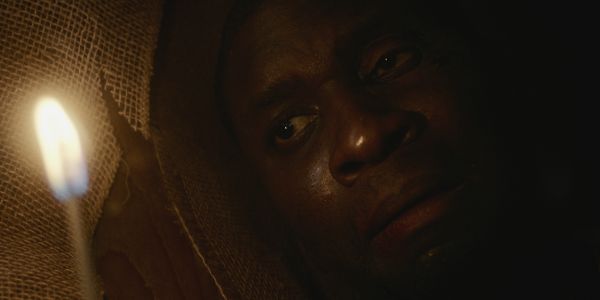BOXED: A Testament To The Power Of Both Perspective & Its Format

Growing up in the Seattle area, Dana spent her childhood…
Films about the transatlantic slave trade are rarely done by people of color. Many of these films, no matter how widely known they are or loved, no matter who they were focusing on (which were more often than had white protagonists rather than Black or other people of color), were told by people who can never, ever understand the weight of what they’re depicting: these films were done through a white gaze.
Gone with the Wind is told through the eyes of white Americans on the side of the Confederates. Despite featuring famous actors Denzel Washington and Morgan Freeman, the Civil War-epic Glory focuses on the white perspective, with Washington and Freeman existing as supporting characters. The one exception here is The Color Purple, based on the classic novel, where it focused on the plight of Whoopi Goldberg’s character, though the film is clearly done through the vision of a white man. People will rush to point out that 12 Years a Slave is an “example” of how this isn’t true, but the fact remains that the Oscar-winning film is the exception, not the rule.

Only through a Black lens, of someone who can understand being the target of racial hatred, of how the damage that was done then continues to reverberate today, only then can such a story be told in a truly cognizant, respectful, and enrapturing fashion. And Boxed is a testament to that fact.
Claustrophobic Confinement
Boxed tells the incredible true story of Henry “Box” Brown, a slave in 1849 Virginia who mailed himself to freedom via a wooden crate. Writer-director Wanjiru M. Njendu decided to tell Henry’s story in a unique, and powerful, way: for the entirety of the film’s short six-minute runtime, we never leave the quarters of Henry’s confinement. This unconventional storytelling method conveys the claustrophobia of Henry’s vehicle to freedom, and we, along with Henry, experience both the dehumanization of this pathway as well as the danger and perilousness of his horrific journey.
The sound design too defies convention and combined with the storytelling method used for Boxed, works like gangbusters. Not done on set but in post-production, this creative decision somehow manages to both magnify the distance between Henry and the outside world as well as demonstrate how close he is to the horrors that await him if caught. A particularly horrifying sequence at the halfway mark manages to be so despite it occurring outside the camera’s view, and this is accomplished solely through this creative decision.

Despite not having a single line of dialogue, Adetokumboh M’Cormack speaks multitudes through careful body language. M’Cormack communicates every thought racing through his character’s mind with a lip quiver here, self-restraint there. With M’Cormack’s performance, Henry’s fear and anger are palpable. Henry wants to lash out and scream at the world he lives in; at the lengths he’s forced to endure just for the mere possibility of freedom. And we alongside him.
Boxed: Conclusion
With Henry Brown’s story, Njendu encapsulates both the resiliency of the human spirit alongside the horrors Black folk endured in that period. Boxed is, yes, an example of how powerful a film about America’s darkest period can be if shot through the eyes of those who can understand the weight of what they’re portraying, but it’s also an example of the power weld by the short film format. And Njendu’s Boxed displays that in full.
Do you agree that more films that focus on America’s history with slavery should be told not only by people of color but with protagonists that are personally impacted by it (as in marginalized groups)? Were you previously familiar with Henry Brown’s survival story? Please let us know in the comments!
If you want to help Boxed continue to reach audiences, you can donate to the film’s gofundme page, which can be found here. For more information about Boxed and its creators, go here.
Does content like this matter to you?
Become a Member and support film journalism. Unlock access to all of Film Inquiry`s great articles. Join a community of like-minded readers who are passionate about cinema - get access to our private members Network, give back to independent filmmakers, and more.
Growing up in the Seattle area, Dana spent her childhood frequenting Hollywood Video and Blockbuster, watching whatever VHS or DVD she could get her hands on. Despite being told that sitting too close to the TV will damage her eyesight, Dana, believing that they didn't know what they were talking about, ignored the advice. Dana has now worn glasses for several years. Her pronouns are she/her.













